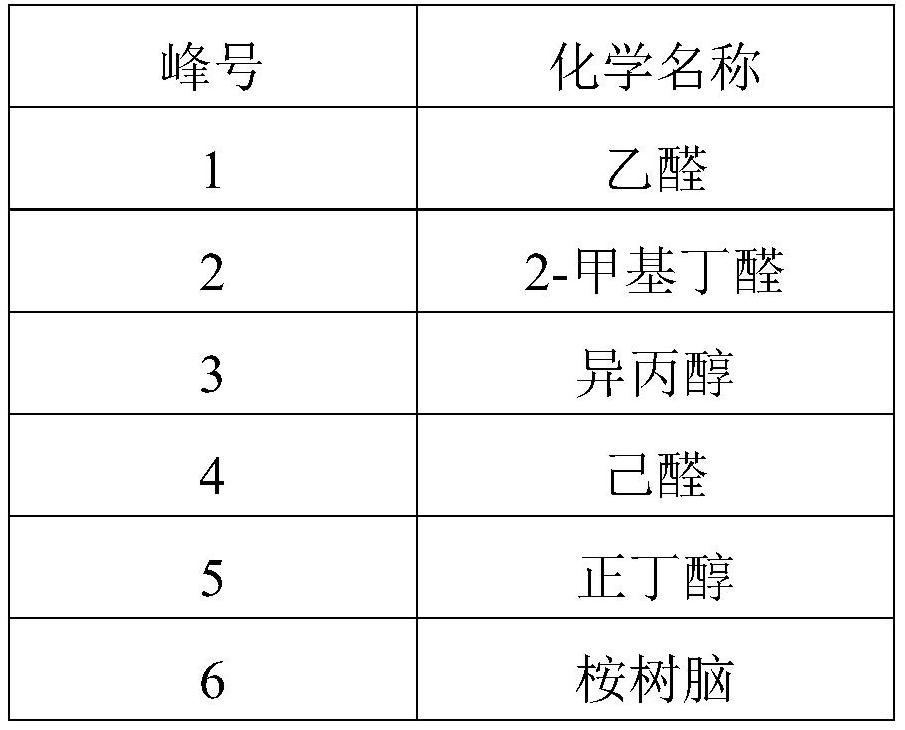Gastric cancer voc markers in saliva and its application in the preparation of gastric cancer diagnostic reagents
A marker, gastric cancer technology, applied in sampling, instruments, measuring devices, etc., can solve the problems of few types of markers, low detection-specific diagnosis rate, limited clinical diagnosis application, etc., to achieve easy storage and transportation, rapid collection, Diagnosis is accurate and reliable
- Summary
- Abstract
- Description
- Claims
- Application Information
AI Technical Summary
Problems solved by technology
Method used
Image
Examples
Embodiment 1
[0026] Embodiment 1: the collection of saliva sample
[0027] Gastric cancer markers in saliva were screened by analyzing saliva from gastric cancer patients and normal individuals. Saliva samples were obtained from 90 volunteers, including 36 cancer patients and 54 normal controls.
[0028] None of the volunteers who provided saliva suffered from other malignant tumors, blood diseases or metabolic diseases.
[0029] Gastric cancer patients were clinically diagnosed using various diagnostic methods, including biopsy, computed tomography (CT), and puncture, while none of the gastric cancer patients had received chemotherapy or other treatments before saliva sample collection.
[0030] Saliva was analyzed for each subject, using a total of 90 saliva samples. Before the sample collection, each volunteer should maintain a natural and peaceful mood within 48 hours, and must not smoke or drink within 24 hours. Within 1 hour before sample collection, all volunteers were prohibited...
Embodiment 2
[0032] Embodiment 2: the detection of saliva sample
[0033] Put the obtained saliva sample into a sample bottle, precisely control the injection volume to 1ml, and heat the sample to 80°C for 20 minutes to ensure that the vapor reaches chemical equilibrium.
[0034] Connect the headspace sampling device to the solid-phase microextraction device, and pre-concentrate the markers in the sample through the 75 μm CAR / PDMS-coated solid-phase microextraction head. The VOCs in the sample are pre-concentrated, and the concentration time is 30-35min.
[0035] GC-MS analysis: Put the extraction head in the GC-MS inlet, at a high temperature of 280°C, desorb for 1min instantaneously, and inject samples in a splitless manner. After 2min, open the diverter valve. CD-1MS chromatographic column for chromatographic separation, 1.4μm×60m×0.25mm.
[0036] Heating program: the initial temperature is 35°C, the retention time is 10 minutes, the temperature is raised to 200°C at 8°C / min, the tem...
Embodiment 3
[0044] The obtained gastric cancer markers in human saliva are used for rapid detection of gastric cancer for effect verification:
[0045]By testing the saliva samples collected from 10 confirmed gastric cancer patients and 10 normal people. When three kinds of acetaldehyde, isopropanol, hexanal, n-butanol, and nonanal exist in saliva, and at least three kinds of menthone, menthol, anethole, and dodecanol do not exist, it indicates that the subject has gastric cancer ; When the content of 2-methylbutyraldehyde, eucalyptol and 2-ethylhexanol is significantly reduced, the auxiliary diagnosis is gastric cancer. Otherwise, it can be judged as normal. The detection process was the same as that in Examples 1 and 2; it was found that 8 cases of gastric cancer samples and 9 cases of normal samples met the above criteria, and the accuracy rate exceeded 80%.
PUM
 Login to View More
Login to View More Abstract
Description
Claims
Application Information
 Login to View More
Login to View More - R&D Engineer
- R&D Manager
- IP Professional
- Industry Leading Data Capabilities
- Powerful AI technology
- Patent DNA Extraction
Browse by: Latest US Patents, China's latest patents, Technical Efficacy Thesaurus, Application Domain, Technology Topic, Popular Technical Reports.
© 2024 PatSnap. All rights reserved.Legal|Privacy policy|Modern Slavery Act Transparency Statement|Sitemap|About US| Contact US: help@patsnap.com










